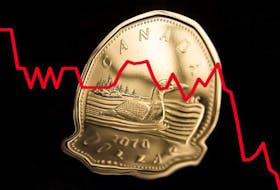Investment math is pretty simple. Over the long run, stocks beat bonds and bonds beat cash. There’s one catch, however, that complicates things. Stocks don’t follow a straight, steady path.
Even a diversified portfolio of stocks, that trends up and to the right on a chart, will zig and zag wildly.
This dynamic makes investing mentally challenging. To get the results you want, you sign up knowing there will be adversity. The periods of rising prices come erratically and unpredictably so you have to be willing to absorb the down markets, which are sometimes bone jarring.
Being a successful investor is less about being good at reading the economy, timing the market, or picking individual stocks, and a whole lot about dealing with the inevitable dips that lie ahead.
Bad math
At this point you might ask, why don’t I just avoid the dips? Go to the sidelines for a while and let the uncertainty around the U.S. election and second wave of COVID-19 settle down.
Well, if you do that, you’re betting against the house. The math stops working. A diversified portfolio goes up more, and for longer, than it goes down, and collects dividends every quarter. This means your moves in and out of the market must be close to perfect to enhance returns.
So rather than trying to avoid the dips, you’re better off preparing for them. Here are some things to think about.
A matter of when
The first thing you need to do is replace the word “if” with “when” in your investment vocabulary. It’s not if a recession hits, if a high-yielding stock cuts its dividend, or if your portfolio goes down, it’s when.
Switching around these two little words makes a world of difference. ”When” implies preparedness, ”if” sounds more like hope.
Dollars and sense
It’s also useful to talk in terms of dollars instead of percentages when gearing up for the next downturn. For example, when a couple I’m working with is contemplating shifting their balanced portfolio into all stocks, I make sure the potential outcomes are defined in dollar terms. “When the market drops 20 per cent, your $500,000 portfolio will go down to $400,000.”
Annualized rates of return (after fees) are the best way to assess how you’re doing over the long term, but when you’re doing a risk reality check, dollars do a better job of hitting the emotional buttons.
Separate buckets
Investing in stocks is appropriate for money that has a long time frame, such as retirement planning. The objective is to generate returns that are well in excess of inflation and grow your nest egg so you can pay yourself a salary after you stop working. In this case, corrections aren’t an impediment to reaching the goal. They’re more likely to be an imperceptible blip on a multi-decade chart.
It’s quite a different matter for money that’s been set aside for a down payment, kitchen renovation, vacation, or emergency fund. It needs to be kept separate and secure, so you know its there when you need it.
If you’re going to be good at navigating down markets, don’t let the money you need in the next year or two creep into your investment portfolio. Different goals have different risks.
Planting seeds
Maybe the best way to prepare for a down market is to look forward to it. It sounds perverse, but for investors who are building their asset base (accumulators), lower prices and rampant fear are a godsend. Regrettably, this is often lost on investors who are otherwise keen to buy a jacket on sale, a car during a year-end clearance or a property from a distressed seller.
As the adage goes, most of your return is made in bear markets, you just don’t know it until later.
Bad markets are a necessary part of investing so you might as well get good at them. That doesn’t mean avoiding them but rather knowing they’re coming, having a good handle on the purpose of your money, and thinking about how you’ll take advantage of them.
If you can’t see holding your current portfolio through the coming market declines, you need to make changes. Because as Seth Godin says in his recent book, The Dip (which inspired this column), “If you can’t make it through the Dip, don’t start.”
Tom Bradley is chair and chief investment officer at Steadyhand Investment Funds, a company that offers individual investors low-fee investment funds and clear-cut advice. He can be reached at [email protected] .
Copyright Postmedia Network Inc., 2020








